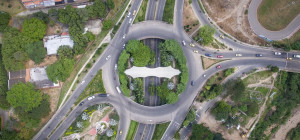 The fifth generation of wireless technology, or 5G, has quickly become one of the most anticipated and discussed technological advancements in recent years. As the successor to 4G, 5G promises faster speed, greater connectivity, and a more significant global impact than its predecessors. As countries and companies race to develop and deploy 5G networks, it’s essential to understand the implications of this new technology and its potential effects on society.
The fifth generation of wireless technology, or 5G, has quickly become one of the most anticipated and discussed technological advancements in recent years. As the successor to 4G, 5G promises faster speed, greater connectivity, and a more significant global impact than its predecessors. As countries and companies race to develop and deploy 5G networks, it’s essential to understand the implications of this new technology and its potential effects on society.
Speed
One of the most significant advancements of 5G technology is its speed. 5G networks promise to be up to 100 times faster than current 4G networks, with peak data rates reaching up to 20 Gbps (gigabits per second) (ITU, 2019). This increase in speed will enable a new era of mobile and internet experiences, including real-time streaming of high-quality 4K and 8K video, instantaneous downloading of large files, and seamless virtual reality and augmented reality experiences.
The increased speed of 5G networks can also benefit industries and businesses. For example, the healthcare industry could benefit from faster and more reliable connections to transmit large medical files, allowing for more accurate and timely diagnoses. In the automotive industry, the speed of 5G could enable real-time communication between vehicles, infrastructure, and pedestrians, resulting in safer and more efficient transportation systems (GSMA, 2019).
Connectivity
5G networks promise not only faster speeds but also greater connectivity. With the ability to support up to 1 million devices per square kilometer, 5G will enable the Internet of Things (IoT) to reach its full potential (ITU, 2019). This increased connectivity will allow for the widespread use of IoT devices, such as smart appliances, wearables, and sensors, improving efficiency and convenience in various aspects of daily life.
The increased connectivity of 5G networks will also have significant implications for businesses and industries. For example, logistics and supply chain companies can benefit from real-time tracking and monitoring of goods, resulting in more efficient and optimized processes. In agriculture, IoT devices can monitor soil conditions, crop growth, and livestock health, allowing farmers to make data-driven decisions and improve overall productivity (GSMA, 2019).
Global Impact
The deployment of 5G networks has the potential to create a significant global impact, from economic growth to bridging the digital divide. According to a report by the Global System for Mobile Communications Association (GSMA), 5G technology is expected to contribute $2.2 trillion to the global economy between 2024 and 2034 (GSMA, 2019). This economic impact will be driven by increased productivity, new business opportunities, and job creation in various sectors.
One of the critical areas where 5G technology can have a global impact is in bridging the digital divide. As 5G networks are deployed, they have the potential to bring high-speed internet access to remote and underserved areas, these communities with access to information, education, and economic opportunities. According to a report by Ericsson, 65% of the global population will have 5G coverage by 2025, further increasing the global accessibility of high-speed internet (Ericsson, 2019).
However, the deployment of 5G networks also raises concerns about the potential exacerbation of existing digital divides. As countries and regions with more advanced infrastructure and resources are likely to deploy 5G networks first, there is a risk that the benefits of 5G technology will be unequally distributed, further widening the gap between digitally connected and disconnected communities (GSMA, 2019).
Conclusion
The implications of 5G technology are vast, with the potential to revolutionize industries, improve daily life, and contribute to significant global economic growth. As 5G networks become more widespread, it is crucial for governments, businesses, and individuals to understand the potential benefits and challenges of this new technology. By harnessing the power of 5G, we can work towards a more connected, efficient, and equitable world.
References
Ericsson. (2019). Ericsson Mobility Report. Retrieved from https://www.ericsson.com/mobility-report/reports/november-2019
GSMA. The 5G era: Age of boundless connectivity and intelligent automation. Retrieved from https://www.gsma.com/r/wp-content/uploads/2019/02/The-5G-era-1.pdf
ITU. (2019). ITU towards IMT for 2020 and beyond. Retrieved from https://www.itu.int/en/ITU-R/study-groups/rsg5/P/imt-.aspx




![Top CEOs under 30-The Young Guns Of Technology [Infographic]](https://lerablog.org/wp-content/plugins/wp-thumbie/timthumb.php?src=http://lerablog.org/wp-content/uploads/2015/03/the-young-guns-of-technology.jpg&w=300&h=140&zc=1)


